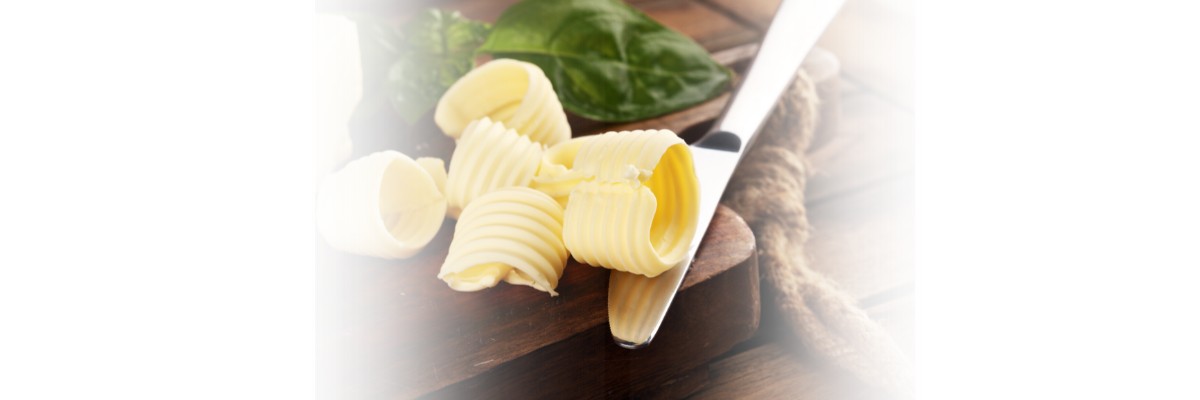Why you would never want to eat margarine in a pink fit?
A little history to start with…
Butter from cow’s milk has been around for a veeerrry looong time, it first showed up in ancient Mesopotamia in 2,500 BC, where a sumerian tablet illustrates its creation.
Margarine was originally created as a substitute for butter in 1869 in France by a well meaning Hippolyte Mège-Mouriès.
What and how they’re made…
Butter…
Ok, so we need unhomogenized milk with it’s cream which contains butterfat in microscopic globules. These globules are surrounded by their membranes and made of phospholipids and proteins, so they prevent the fat in milk from pooling together into a single mass. When the cream is agitated it damages these membranes and the milk fats gather together, separating from other parts of the cream, creating butter. Free butterfat, butterfat crystals and undamaged fat globules are three separate forms of fat and will vary in differing proportions in each batch of butter. If you have a butter with many crystals it will be harder than a butter with more free butterfat.
Now to margarine...
Firstly, skim milk is used, meaning it has been homogenized. Secondly, it’s mixed with an emulsified blend of hydrogenated vegetable oils. Thirdly, it is chilled to solidify and worked on to improve its texture and taste. The vegetable oils are extracted from various seeds, and must be chemically removed, they are unable to be extracted by pressing and they don’t separate naturally. They are further deodorized and altered, making them some of the most chemically altered foods in our diets. So, genetically modified seeds such as canola, soy, corn etc. are often used, along with a modified milk, giving a chemical cocktail.
So which are you going to choose?
I’ll leave that up to YOU!! OR
Book a personal consultation to find out what you can do - schedule a free 20 minute chat
Yours in Health and Happiness

Sandy B.
![]()

